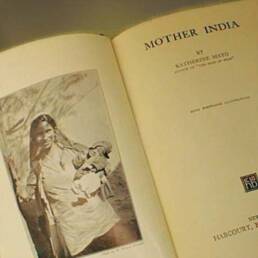If you have traveled to Meerut at some point of time, then chances are you have seen the magnificent Basilica of Our Lady of Graces. The founder was a certain Joanna Nobilis: a courtesan turned mercenary turned diplomat turned queen.
During the 18th century, India became a kaleidoscope of wars as the Mughals, Britishers, French, Rajputs, Afghans, Jats, Sikhs and Marathas were all involved in shifting alliances and securing their right to power.
The war-torn lands in India attracted many European mercenaries. Walter Reinhardt was one such name. A shrewd soldier from Alsace who had served several forces during his time in India and often changed his allegiance just in time before ending up on the losing side.
While teaming up with the Jats who then controlled Agra and Delhi, the 45-year-old Reinhardt saw Farzana, a 15-year-old Kashmiri nautch girl at Delhi’s Chauri bazaar. Spellbound by her enchanting beauty, he soon married her.
An Indianized version of her husband’s nickname ‘Le Sombre’ lent her a new name – Begum Samru. After their holy union, Farzana showed keen interest to learn the skills of a mercenary. She started to accompany Reinhardt in his campaigns and in no time earned the admiration of his troops.
For his service against the Sikh expansionism, the Maharaja of Gwalior offered a large estate to Reinhardt as a reward, at Sardhana, in Meerut. Farzana, with her impeccable leadership skill, used the opportunity to build their kingdom around the place.
When Reinhardt passed away in 1778, Farzana became the de facto ruler of Sardhana. As one might think, her claim to the throne did not come inherently, she earned it rightfully.
Despite having a significantly small stature of just above 4 and a half feet, she led her troops to battle wearing a turban and riding on a horseback and ruled her kingdom for 5 decades around a Mughal stronghold state.
Her meticulous knack for forging deals with the enemy and unrelenting attitude in the warfield aided the Mughals on several occasions, earning her the title Zeb-un-nissa (Ornament Among Women).
The cost of building her primary palace at Sardhana came from the Mughal Emperor, Shah Alam II, whom she saved from an invasion in Delhi by a force of 30,000 Sikhs. Akbar Shah, the predecessor of Shah Alam II had also gifted her a garden which she later used to build the Chandani Chowk palace.
The modern-day State Bank of India, Chandni Chowk Branch is running their operations from this palace. Farzana was not only a fearsome ruler, but she was also revered for her attempts to build communal harmony around her kingdom.
She converted to Catholicism from Islam while nearing her thirties and dubbed herself as Joanna Nobilis, after Joan of Arc.
Under her supervision, the largest cathedral in northern India was built that subtly mixed baroque and Mughal motifs, with a great classical dome rising from Mughal squinches decorated with honeycombed Persian murqana motifs.
Despite her newly found beliefs, she continued to cover her head in the Muslim way. She had never consumed alcohol but was often seen smoking a hookah. During her reign in Sardhana, Christmas, Holi, Dussera, and Diwali were celebrated with equal enthusiasm.
She even used to claim her offering to Sitla Mata temple of Gurugram during the Chaitra month and the revenue from the offerings given to the deity for the rest of the month was distributed among the prominent Jat families around the area.
A colorful character like Farzana, might feel a bit over the top even if it were a work of fiction, and yet she was as real as it comes. Sadly though, her memories remain only in the scrambled streets of Old Delhi and the footnotes of India’s glorious past.
Source:
Priyanka Borpujari, “India’s forgotten power broker—what was her secret?”, https://www.nationalgeographic.com/culture/article/india-forgotten-power-broker-begum-samru
Dalrymple, William. The Last Mughal: The Fall of a Dynasty, Delhi 1857. (Bloomsbury Publishing)




